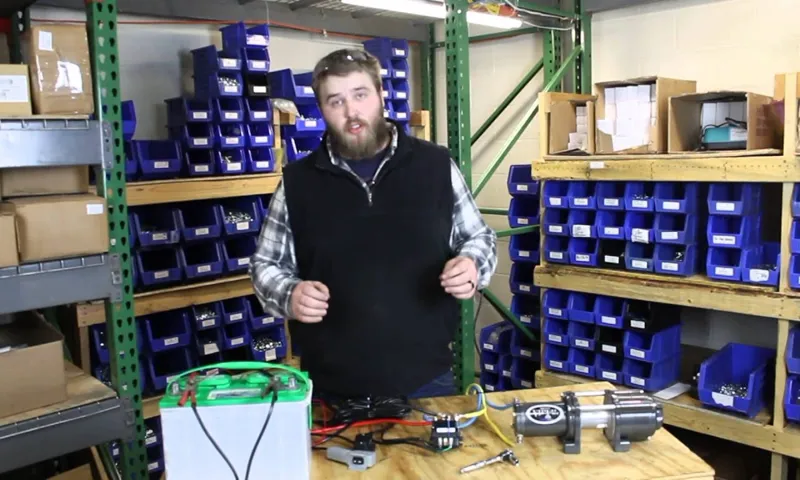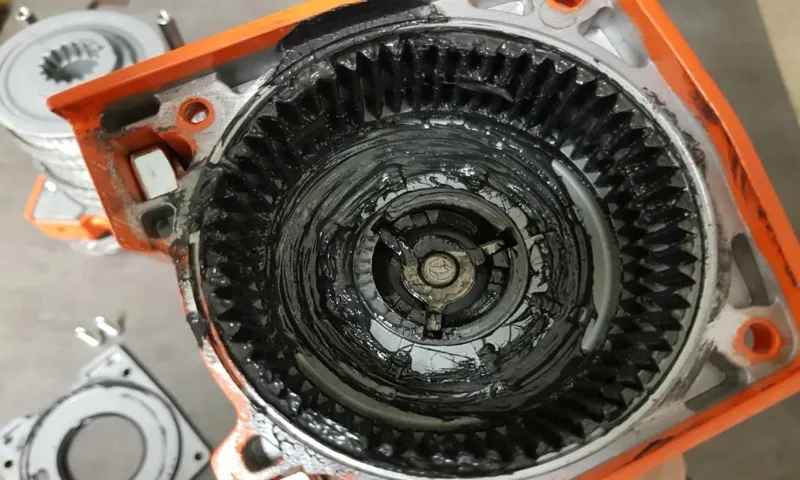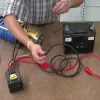So, you’ve just bought yourself a new ATV with a powerful winch, and you’re excited to start using it. But before you can take on any tough terrain or rescue your buddies from a muddy predicament, you need to make sure that winch is in proper working order. Testing an ATV winch is an essential step to ensure its reliability when you need it most.
But how exactly do you go about testing it? Don’t worry, we’ve got you covered. In this blog post, we’ll walk you through the steps to test your ATV winch and make sure it’s ready for action. So grab your toolbox and let’s get started.
Table of Contents
Introduction
If you’re the proud owner of an ATV (All-Terrain Vehicle) with a winch, it’s important to know how to test it to ensure it’s working properly. Testing your ATV winch is essential for maintenance and to avoid any unexpected issues while out on the trails or performing tasks that require the use of the winch. So, how do you test an ATV winch? First, make sure the ATV is in a safe and secure position.
Then, engage the winch by pulling out the cable and attaching it to a sturdy object or anchor. Once it’s securely attached, activate the winch using the controller or switch. Observe how smoothly the winch pulls the load and listen for any unusual noises.
Check the cable for any signs of fraying or damage. Finally, reverse the winch to retract the cable and see if it rolls back up smoothly. By regularly testing your ATV winch, you can be confident that it will come to your rescue when you need it most.
What is an ATV Winch?
ATV winches are an essential accessory for off-road enthusiasts who love to explore rough terrains and challenging trails. But what exactly is an ATV winch? In simple terms, an ATV winch is a device that allows you to pull or hoist heavy loads using a motor and a spool of wire rope. It is typically mounted on the front or rear of the ATV and can be operated either manually or electrically.
Imagine you’re out on a thrilling adventure with your ATV, but suddenly you find yourself stuck in the mud or caught in a difficult situation where your tires are spinning, and you can’t move forward or backward. This is where an ATV winch comes to the rescue. It provides a powerful pulling force that can help you get out of sticky situations by pulling your ATV or any other object out of a tough spot.
An ATV winch consists of several components, including a winch motor, a gear train, a spool, a wire rope, and a control switch. The winch motor is responsible for providing the necessary power to pull heavy loads. The gear train converts the rotational force of the motor into a linear pulling force.
The spool holds the wire rope, which is wound and unwound as the winch operates. The control switch allows you to control the winch, controlling the direction and speed of the pulling action. The power of an ATV winch is measured in terms of its pulling capacity, which is usually expressed in pounds.
The higher the pulling capacity, the more weight the winch can handle. It’s important to choose the right winch for your ATV based on its weight and the type of terrain you’ll be exploring. Going for a winch with a higher pulling capacity than your ATV’s weight is generally recommended for added safety and versatility.
Not only are ATV winches useful for self-recovery in challenging situations, but they can also be used for a variety of purposes. From hauling heavy loads, clearing obstacles, and assisting in recovery operations, ATV winches offer a wide range of applications that can greatly enhance the functionality of your ATV. In conclusion, an ATV winch is a valuable accessory that can turn your ATV into a powerful pulling machine.

Why is Testing an ATV Winch Important?
testing an ATV winch. Introduction: If you own an ATV and love going on off-road adventures, having a reliable winch is crucial. An ATV winch can save you from getting stuck in mud or other difficult terrain, and it can also be handy for pulling heavy objects or other vehicles.
However, just having a winch installed on your ATV is not enough. It is equally important to regularly test your ATV winch to ensure its proper functioning when you need it the most. In this blog post, we will discuss why testing an ATV winch is important and how it can help you in various situations.
So, let’s get started!
Preparation
So you’ve just purchased a new ATV winch and you’re excited to put it to the test. But before you start pulling heavy loads or rescuing stuck vehicles, it’s important to properly prepare and test your winch to ensure it’s in good working condition. First, inspect your winch for any visible damage or loose parts.
Check the cable or rope for any frays or kinks and make sure it’s properly secured to the drum. Next, test the winch by pulling a light load. This will help you identify any issues with the winch’s motor, gears, or electrical connections.
Make sure to fully engage and disengage the winch to ensure it operates smoothly. Finally, perform a load test by pulling a heavier load, gradually increasing the weight to its maximum capacity. This will give you a good idea of how your winch performs under more challenging conditions.
By properly preparing and testing your ATV winch, you can have confidence in its ability to get the job done when you need it most.
Gathering the Necessary Tools
“Preparation: Gathering the Necessary Tools for Success” Now that you’ve made the decision to pursue your goals and dreams, it’s time to gather the necessary tools to set yourself up for success. Just like a carpenter needs a hammer and nails to build a house, you need the right resources to make your dreams a reality. First and foremost, it’s important to have a clear vision of what you want to achieve.
Take some time to sit down and think about your goals. What do you want to accomplish? How will you measure your success? Having a clear vision will provide you with the motivation and direction you need to move forward. Once you have your goals in mind, it’s time to gather the practical tools you’ll need to support your journey.
This could include things like books, courses, or mentors. Look for resources that align with your goals and can provide you with the knowledge and skills you need to succeed. Don’t be afraid to invest in your education or seek guidance from others who have already achieved what you want to achieve.
In addition to gathering resources, it’s important to create an environment that supports your goals. Set up a dedicated workspace where you can focus and get things done. Eliminate distractions and surround yourself with things that inspire and motivate you.
This could be anything from motivational quotes to pictures of your loved ones. Lastly, don’t forget to take care of yourself along the way. Remember that your physical and mental well-being are essential to your success.
Make time for self-care activities that recharge your batteries and keep you feeling balanced and focused. In conclusion, preparation is key to achieving your goals and dreams. By gathering the necessary tools, creating a supportive environment, and taking care of yourself, you will be setting yourself up for success.
Inspecting the Winch
winch inspection
Testing the Winch
Are you ready to test out your ATV winch before tackling those tough off-road trails? It’s always a good idea to make sure your winch is in proper working order before you find yourself stuck in a tricky situation. Testing your winch not only ensures its functionality but also gives you peace of mind knowing that it’s ready to help you out when you need it most. So, how do you test an ATV winch? Start by checking the winch for any visible signs of damage or wear.
Next, engage the winch and slowly pull on the rope to ensure it is winding and unwinding smoothly. You can also test the winch by attaching it to a stationary object and simulating a recovery situation. By testing your winch regularly, you can ensure its reliability and maximize its lifespan.
Pulling Capacity Test
winch, pulling capacity test, testing the winch
Control Switch Function Test
winch control switch function test.
Free Spool Test
winch testing, free spool test. Do you ever wonder how winches are tested to ensure they will perform at their best when you need them? One important test is the free spool test. The free spool test is a crucial step in winch testing that checks the functionality of the winch’s clutch system.
Imagine you’re driving off-road and suddenly get stuck in the mud. You reach for your winch, hoping it will come to your rescue. But what if the winch’s clutch system doesn’t work properly? That’s where the free spool test comes in.
During this test, the winch is put into free spool mode, allowing the cable to be pulled out without resistance. This is done to ensure that the clutch engages and disengages smoothly, providing reliable control over the cable. In essence, the free spool test simulates a real-life scenario where you need to deploy the winch quickly and efficiently.
So next time you use a winch, remember that it has gone through rigorous testing to ensure it will be there when you need it most.
Safety Precautions
If you own an ATV, having a winch can be incredibly useful in a variety of situations. Whether you need to pull your ATV out of a tight spot or help a friend out of a jam, a winch can be a lifesaver. But before you start using your winch, it’s important to know how to test it to ensure it’s working properly.
First, make sure to read the owner’s manual for specific instructions on how to test your winch. Generally, you’ll want to connect the winch to a power source and slowly pull out the cable. Make sure the cable is winding correctly and that the winch is able to handle the load.
You should also check the remote control to ensure it’s functioning properly. Finally, make sure to inspect the winch for any signs of damage or wear and tear. Testing your winch regularly will help ensure it’s ready for any situation that may arise.
So before you head out on your next ATV adventure, take the time to test your winch and ensure your safety.
Wearing Protective Gear
protective gear, safety precautions, wearing protective gear
Securing the ATV
safety precautions for securing an ATV. When it comes to riding an ATV, safety should always be a top priority. Securing your ATV properly not only protects the vehicle itself but also ensures the safety of yourself and others.
One of the first safety precautions to take is to invest in a sturdy and reliable lock or security device. This will help deter potential thieves and make it more difficult for them to steal your ATV. Additionally, parking your ATV in a well-lit and visible area can also deter thieves and increase the chances of someone noticing any suspicious activity.
It’s also important to never leave the keys in the ignition or the vehicle unlocked when not in use. Another safety precaution to consider is using a cover for your ATV when it’s not in use. This helps protect it from the elements and keeps it out of sight from potential thieves.
Lastly, always keep a record of your ATV’s serial number, make, and model. This information can be helpful in the event that your ATV is stolen and needs to be reported to the authorities. By taking these safety precautions, you can help secure your ATV and have peace of mind when it’s not in use.
Conclusion
In conclusion, testing an ATV winch is like testing the strength of a superhero. You want to ensure that it can handle any task you throw its way, just like Superman lifting a building or Wonder Woman deflecting bullets with her bracelets. To put your winch to the test, think of it as a battle between the winch and the forces of nature – a showdown like no other! Whether you’re facing off against a steep incline, a muddy terrain, or a fallen tree on your path, your winch needs to be as reliable as Captain America’s shield, protecting you from any obstacles that come your way.
But how do you know if your winch is truly up to the challenge? Much like Batman investigating a crime scene, you must analyze every detail meticulously. Check for any signs of wear and tear, just like Sherlock Holmes piecing together clues. Is the cable in good condition? Are the gears properly lubricated? Is the motor running smoothly? These are the questions you must ask yourself in this quest for winch excellence! Once you’ve done your detective work, it’s time to put your winch to the ultimate test.
Like a gladiator stepping into the arena, engage your winch in a battle of strength. Attach it to a heavy load and watch as it effortlessly pulls it towards you, like the Hulk displaying his incredible might! But remember, just as our favorite superheroes have their limits, so too does your winch. Don’t push it beyond what it can handle, or it might end up like Thor trying to lift Mjolnir without being worthy.
Respect its limits and give it the proper care and maintenance it deserves. So, my fellow adventurers, now you know the secret to testing an ATV winch – it’s all about channeling your inner superhero! With the right amount of preparation, attention to detail, and a hearty dose of imagination, you can ensure that your winch will always be there to save the day when you need it most. Happy winching, and may the strength of your winch be as legendary as the legends themselves!”
Regularly Testing Your ATV Winch
Atv winches are an essential tool for off-roading enthusiasts, allowing them to pull themselves out of tough situations. But just like any other piece of equipment, ATV winches need regular testing to ensure they’re in proper working order. One of the most important aspects of testing an ATV winch is following safety precautions.
Remember, winch cables are under immense tension and can snap if not handled properly. Before testing your winch, always make sure to wear gloves and eye protection to shield yourself from any potential dangers. Additionally, keep a safe distance from the winch cable while it’s under tension, and never stand directly in front of it.
By taking these safety precautions, you can ensure a safe and smooth testing process for your ATV winch.
Ensuring Proper Functionality for Safe Off-Roading
Ensuring Proper Functionality for Safe Off-Roading Safety Precautions When it comes to off-roading, safety should always be the top priority. Whether you’re a seasoned off-roader or just starting out, taking the necessary precautions can help ensure a safe and enjoyable experience. One of the first things to consider is the functionality of your off-road vehicle.
Before hitting the trails, it’s essential to thoroughly inspect your vehicle to make sure everything is in proper working order. Check your tires for signs of wear and tear, and ensure that they have the right amount of tread for off-roading. Inspect your brakes and suspension systems to make sure they are in good condition and can handle the rugged terrain.
Additionally, check all fluids and filters, as well as the electrical system, to ensure they are functioning properly. Taking the time to perform these checks before heading out will help prevent any unexpected breakdowns on the trail, keeping you safe and your off-roading adventure on track.
FAQs
How do I test an ATV winch for proper functionality?
To test an ATV winch, first ensure it is securely mounted to your ATV. Then, attach a suitable load to the winch hook, such as a heavy object. Use the winch controls to spool in and out the cable, observing if the winch operates smoothly and if the load is being lifted or pulled with sufficient power.
What are the common troubleshooting steps for an ATV winch that is not working?
If your ATV winch is not working, start by checking the connections to ensure they are secure and free from corrosion. Next, inspect the winch switch or control for any damage or signs of malfunction. It is also important to verify that the winch motor is receiving power by checking the battery and fuses. If these steps do not resolve the issue, it may be necessary to consult the winch’s user manual or contact the manufacturer for further assistance.
How often should I test and maintain my ATV winch?
It is recommended to test your ATV winch on a regular basis, especially before heading out on a ride or if it has been sitting idle for an extended period. This ensures that the winch is in proper working condition when you need it. Additionally, regular maintenance should be performed, such as lubricating the winch drum, checking and tightening all connections, and inspecting the cable for any signs of wear or damage. Following the winch manufacturer’s guidelines for maintenance intervals is also recommended.
Can I use my ATV winch to tow another ATV or vehicle?
Yes, an ATV winch can be used to tow another ATV or vehicle, but it is important to consider the winch’s capacity and the weight of the vehicle being towed. Check the winch’s specifications to determine if it is suitable for towing and always ensure that the tow load is within the winch’s rated capacity. It is also recommended to use appropriate tow straps or cables for secure attachment.
What safety precautions should I take when using an ATV winch?
When using an ATV winch, always wear appropriate personal protective equipment, such as gloves and eye protection. Ensure that the winch and its components are in good working condition before each use. Use caution when operating the winch controls, keeping hands and fingers clear of moving parts. Never exceed the winch’s rated capacity and avoid sudden jerks or tugs during operation. Always follow the manufacturer’s instructions and guidelines for safe use.
Can I install an ATV winch on any ATV model?
While many ATV models can accommodate winch installations, it is important to verify compatibility before purchasing and installing a winch. Consider factors such as the ATV’s weight, frame design, and available mounting points. Some ATV models may require additional mounting brackets or modifications for proper winch installation. Consult the ATV manufacturer’s recommendations or contact a trusted dealer or mechanic for assistance.
How do I choose the right ATV winch for my needs?
When choosing an ATV winch, consider factors such as the weight of your ATV, the types of tasks you will be using the winch for (e.g., pulling, lifting), and the winch’s line pull and rated capacity. It is recommended to select a winch with a rated capacity that exceeds the heaviest load you expect to encounter. Additionally, consider the winch’s durability, ease of use, and available accessories. Reading customer reviews and seeking expert advice can also help in making an informed decision.



